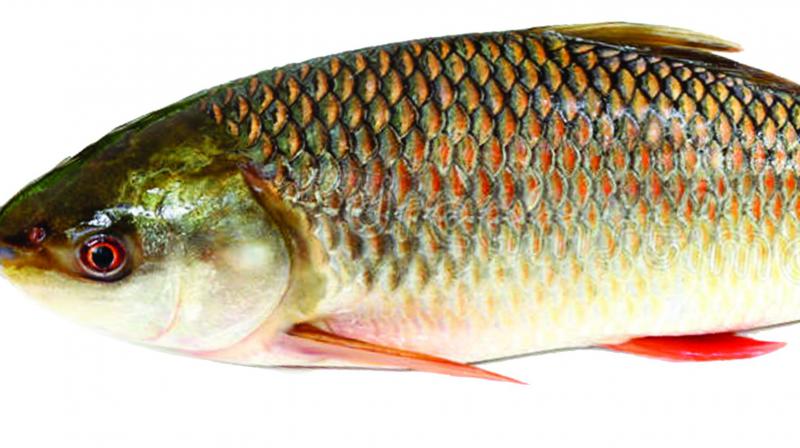Machilipatnam fish: Not too health-friendly
Metals like zinc, lead and chromium are present in higher concentrations than permissible limits: Study.

Vijayawada: Next time you plan to eat the prized sea fish varieties caught off the Machilipatnam coast, think again. You may be consuming fish laced with heavy metals that can be a major health hazard. Studies of fish caught off the Machilipatnam coast showed high concentrations of metals such as zinc, lead, chromium and others, well above the permissible limits prescribed by the World Health Organisation (WHO). Vijayawada gets sea fish from the Machilipatnam coast besides some freshwater fish reared locally.
Fish is more susceptible to heavy metal contamination than any other aquatic fauna. It is well known that fish are a good indicator of chemical pollution and so are used to monitor metal pollution in the coastal and marine environment. Fishes are also considered better specimens for use in the investigation of pollution load than water samples because of the significant levels of metals they bioaccumulate. Hence, harmful substances like heavy metals released by anthropogenic activities will be accumulated in marine organisms through the food chain; as a result, human health can be at risk because of consumption of fish contaminated by toxic chemicals.
“Heavy metal exposure of the population may cause neurobehavioral disorders such as fatigue, insomnia decreased concentration, depression, irritability, sensory and motor symptoms. Exposure to heavy metals has been linked to developmental retardation, various types of cancer, kidney damage, autoimmunity and even death in some instances of exposure to very high concentrations,” said the report by P.V. Krishna, K. Madhusudhana Rao , V. Swaruparani and D. Srinivas Rao of the zoology & aquaculture and biotechnology departments of Acharya Nagarjuna University (ANU), in the report “Heavy Metals Concentration in Fish Mugil cephalus from Machilipatnam Coast and Possible Health Risks to Fish Consumers.”
India’s weekly annual rate of consumption of fish is 55kg/person
Zinc: 32mg/kg average concentration of zinc, higher than WHO standards.
15mg Recommend daily dietary intake of Zinc for adults and 10mg for children aged one and above.
16.1mg The average diary intake of zinc in India.
It is relatively non-toxic and consumption of Zinc upto 25mg/kg have shown few side effects.
Lead: In the present study, lead concentration goes to 10.8mg/kg in fish muscle.
2mg/kg the maximum accepted limit is for fish. High levels of lead exposure causes damage to almost all organs.
Most importantly, the central nervous system, kidneys and blood get affected and culminate in death, if levels exceed permissable limits.
At low levels, haeme synthesis and other biochemical processes are affected and psychological and neurobehavioral functions are impaired.
Manganese: In the present study, manganese goes upto 8.9 mg/kg in fish muscle which is higher than the permissible limits set by WHO.
Copper: The average concentration of copper in the present study goes to 6.4mg/kg in fish muscle which is also above permissible limits.
Mercury: According to results obtained, mercury levels of muscle of M. Cephalus were found to be 2.2 mg/kg which again is higher than permissible limits set by WHO.

